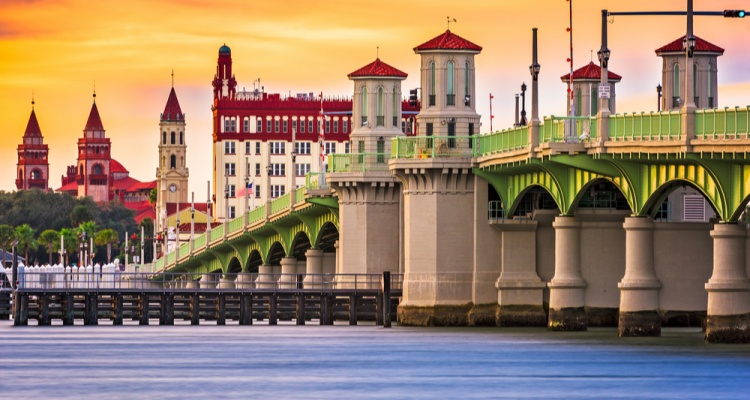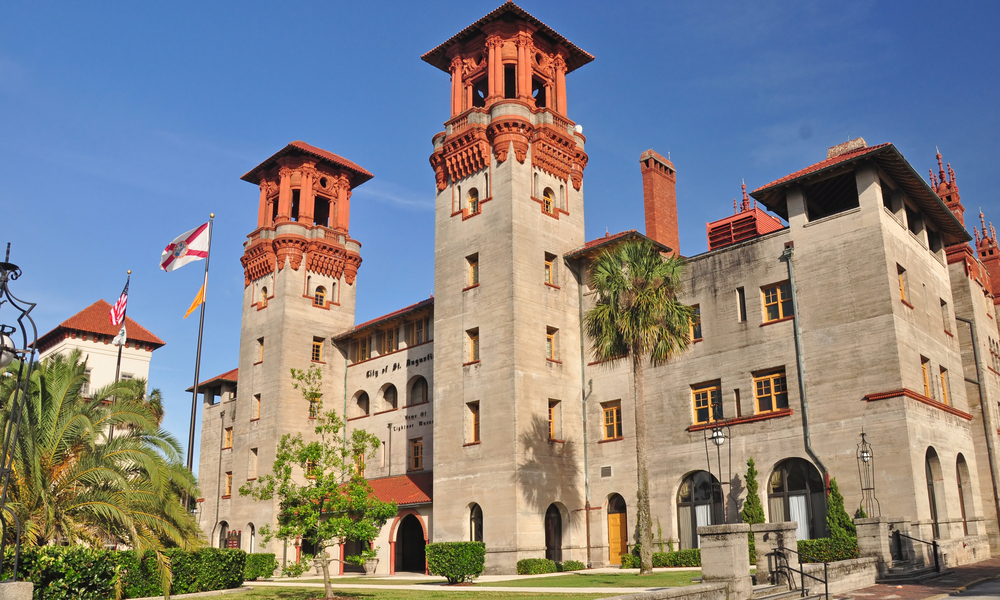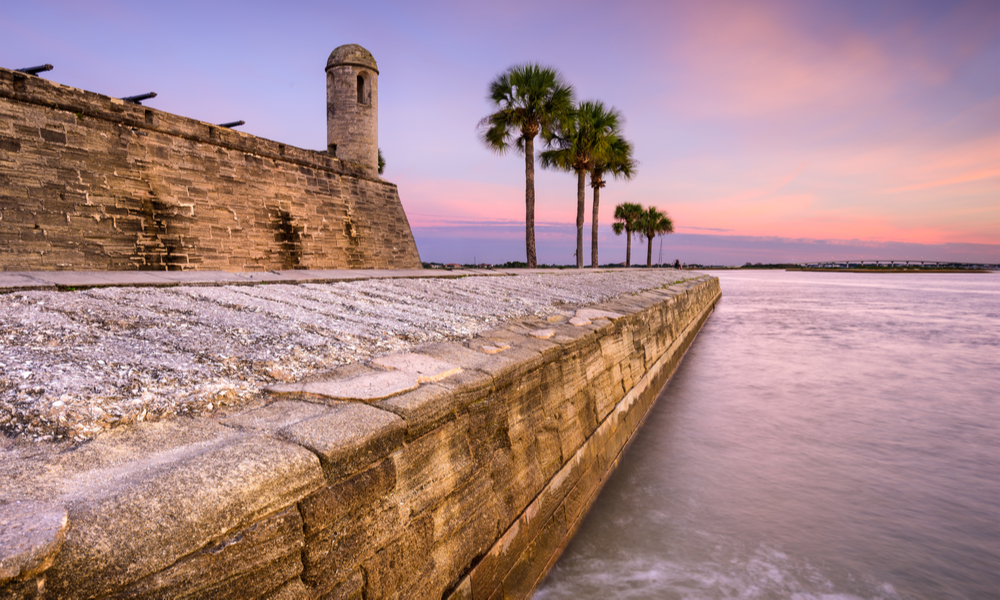Hispanics are the largest minority in the US, with almost 60 million residents of which 13% (41 million) speak Spanish at home. If you take a look at history, everything started in 1492, when the Spanish Crown tasked Christopher Columbus with the mission of finding an alternative route to Asia sailing all the way west. Instead, he ended up disembarking at the island that Dominicans and Haitians call home today: La Española. However, did you know that the oldest settlement in continental US territory is in Florida? Founded in September 8, 1565 by Pedro Menéndez de Avilés, “San Agustín” came to be nothing more than an outpost from where he could take over a nearby French garrison. Which, make no mistake, he totally did.
But there’s more than conflict to it: the city would also eventually serve as a refuge for fugitive slaves who fled nearby plantations, becoming the first settlement of free African-Americans in the US. Indeed, St. Augustine‘s Hispanic heritage marks the literal building of a nation. A walk through its wildly popular colonial quarter is enough to transport you to a romantic age of discoveries and empires from centuries ago. Feeling excited yet? Good! Then join us on this route to check out the Hispanic roots of St. Augustine, Florida .
Lightner Museum
One of Florida’s finest institutions, the Lightner Museum is housed in the former Alcázar Hotel — a magnificent 1888 building that holds one of the best collections of decorative 19th-century art you can find in the US. The place was the pinnacle of luxury by the 1890s, pampering its guests with tennis courts, sulfur baths, steam rooms, gymnasium, a bicycle academy, and the biggest indoor pool in the world at the time. Dubbed “The Castle of Happy Returns”, the 4-floor building displays a truly eclectic collection originally owned by Chicago publisher Otto Lightner, from shrunken heads and mummies to more mundane yet beautiful objects such as typewriters and Tiffany glass ornaments. One of the museum’s most popular exhibitions is the antique mechanical music demonstration conducted every morning, in which visitors can listen to tunes crafted by authentic 1870s and 1920s instruments.
Castillo de San Marcos
The imposing Castillo de San Marcos is not only St. Augustine’s most popular tourist attraction, it’s also the oldest masonry fort in the continental US. It was built between 1672 and 1695 to assure Spanish military dominance in the region during colonial times. The fortress is particularly unique in the way it was built since the walls were assembled using an ingenious “secret formula” of sand mixed with a mollusk known as “coquina”. Spanish architects discovered that the shells of this small animal perfectly absorbed the impact of enemy fire. This genius development turned San Marcos into an impenetrable and fireproof bastion. The British were unable to take the city by military means (and they sure tried) from 1702 to 1740. The castle was owned by British forces and turned into a jail during the Revolutionary War until it was eventually returned to the Spaniards in 1784.
Castillo de San Marcos is a National Landmark that you just can’t miss if you plan to book cheap flights to Florida anytime soon. Its breathtaking views of the ocean and array of old-timey activities such as cannon firings and weaponry demonstrations will surely delight history buffs and visiting families alike.
Fountain of Youth Archaeological Park

“Grand Entrance” by Valerie is licensed under CC BY 2.0
We know; this looks like a tourist trap from a mile away. We can’t argue with that. But hey, it’d be a pity to leave St. Augustine without spending a fun, family-friendly day at the alleged source of one of the most famous legends of 16th-century Latin America: the mythic quest for the Fountain of Eternal Youth. The Spanish explorer Ponce de León set foot on Florida on April 2, 1513, naming the brand new region with a variation of the Spanish word for Easter: “Pascua Florida”. Fair enough, the conquistador actually never said a word about any kind of miraculous waters. Nonetheless, various authors such as Washington Irving, Hernando de Escalante Fontaneda, and Antonio de Herrera y Tordesillas somehow managed to link the Spaniard to this legend after his death in 1521.
Aside from its kitsch touristy appeal (you can even drink from the “authentic” fountain!), the privately owned Fountain of Youth Archaeological Park is a valuable educational platform for anyone who wants to learn more not only about this timeless tale, but also about amazing historical facts such as the way the original Timucua tribes that inhabited the area lived and thrived in pre-Columbian times.
You may also like: Appreciate Hispanic Heritage and History in the US at These 6 Locations
Shrine of Our Lady of La Leche
Our last stop is, no doubt about it, one of the holiest places you’ll ever visit. No exaggeration here. It’s, after all, the oldest surviving Catholic chapel in the US! History states that Menéndez de Avilés celebrated in this exact location the first parish mass ever observed in America. The Shrine of Our Lady of La Leche is fairly unusual since it’s devoted to the Blessed Virgin Mary but only in her nursing form (“leche” is the Spanish word for “milk”), a cult that can be traced back to 4th-century Bethlehem’s grottos. The shrine, located at the Christian terrains known as “Mission of Nombre de Dios”, arranges pilgrimage tours to accommodate the hordes of people who come from everywhere to discover this true religious landmark.
Have you ever visited the historic city of St. Augustine? Share your experience with us in the comments section.




